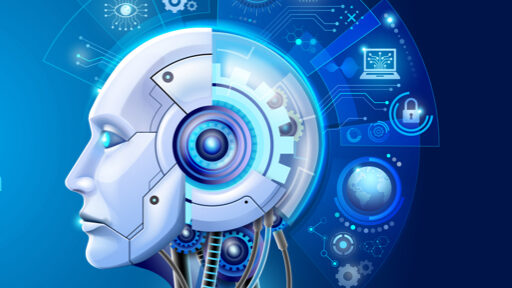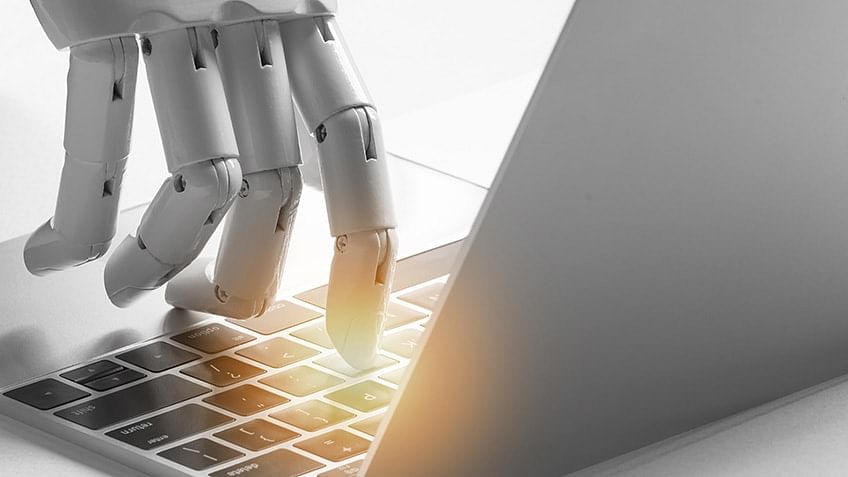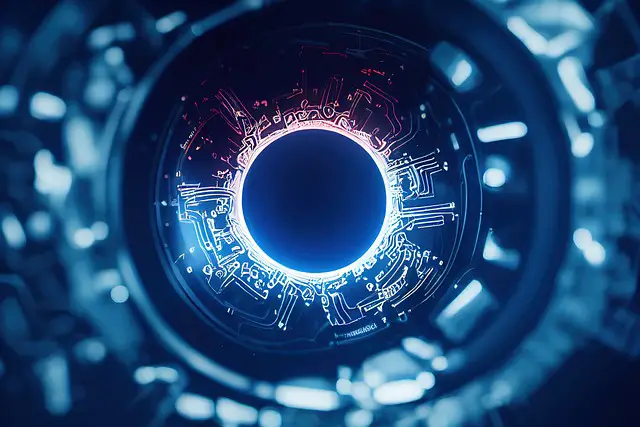There is no definitive answer to the question of who invented artificial intelligence (AI). AI has been around in some form or another for centuries, with early examples including mechanical automata such as the Turk and Jacquard loom. In more recent times, AI has been developed through a combination of philosophical reasoning, psychological experimentation, and mathematical analysis.
Alan Turing is often credited as being the father of AI, thanks to his work on the Turing test which proposed a way to determine whether a machine could exhibit intelligent behavior. However, there are many other individuals who have contributed significantly to the field of AI and its continued development.
Inventing artificial intelligence is an ongoing process with many people contributing to its development. The term “artificial intelligence” was first coined in 1956 by computer scientist John McCarthy. McCarthy and other early AI researchers were influenced by a number of ideas from philosophy, psychology, and mathematics.
One of the earliest examples of artificial intelligence is the Turing test, developed by Alan Turing in 1950. The test determines whether or not a machine can exhibit intelligent behavior equivalent to or indistinguishable from that of a human being. A machine that passes the Turing test is said to be intelligent.
While the Turing test is still used today as a benchmark for AI research, it has been criticized for its lack of scientific rigor. In recent years, there have been great strides made in artificial intelligence thanks to advances in computing power and algorithms. Deep learning, a subset of machine learning, has been particularly successful in emulating human cognition.
Today, artificial intelligence is used in a variety of fields including medicine, finance, manufacturing, and even art. As AI technology continues to evolve, it is sure to have an increasingly profound impact on our lives and the world around us.
Who Invented A.I.? – The Pioneers of Our Future
Who Created the First Artificial Intelligence?
The field of Artificial Intelligence (AI) was established at a conference on Dartmouth in 1956. The participants were John McCarthy, Marvin Minsky, Allen Newell, Claude Shannon and Herbert Simon.
They coined the term “Artificial Intelligence” and outlined the now classic goals of AI: reasoning, knowledge representation, planning, learning, and natural language processing.
Who is Known As the Father of Ai?
The father of AI is a man by the name of John McCarthy. He was born in 1927 and died in 2011. McCarthy was an American computer scientist and cognitive scientist.
When was the Ai Invented?
The term “AI” was first coined by John McCarthy in 1955 at the Dartmouth Conference, where he proposed it as an area of study. McCarthy is often referred to as the father of AI. However, the history of AI actually goes back much further than that.
One of the earliest examples is the Turk, a chess-playing machine built in 1770 by Wolfgang von Kempelen. The Turk could beat most human opponents, but it was later revealed that a hidden human operator was controlling the moves.
In 1801, Joseph Marie Jacquard invented a loom that used punch cards to automatically weave patterns.
This system is considered an early example of artificial intelligence, as it showed that machines could be programmed to carry out complex tasks.
Other early milestones include 1848: George Boole develops Boolean algebra, laying the foundations for digital circuit design and modern computer science.
1906: Hugo Diemer invents neural networks, which are networks of simple processing elements (neurons) that can learn to recognize patterns of input data.

What is Artificial Intelligence
Artificial intelligence is a branch of computer science that deals with the creation of intelligent agents, which are systems that can reason, learn, and act autonomously. The term “artificial intelligence” was coined in 1956 by computer scientist John McCarthy. There are three main types of AI:
- rule-based systems
- decision tree systems and
- neural networks.
Rule-based systems use a set of rules to make decisions. Decision tree systems make decisions by considering all possible options and choosing the best one. Neural networks are modeled after the brain and can learn from experience.
AI has many applications in business, medicine, finance, robotics, and more. Businesses use AI to automate tasks such as customer service, marketing, and sales. In medicine, AI is used for diagnosis, treatment planning, and disease prevention.
Financial institutions use AI to detect fraud and make investment decisions. Robotics companies use AI to create smarter robots that can work alongside humans. The future of AI is very exciting!
With continued advances in computing power and algorithms, we will see even more amazing applications of artificial intelligence in the years to come!
History of Artificial Intelligence
The history of artificial intelligence (AI) is a long and complicated one. It began with the ancient Greeks, who were the first to develop concepts that would later be used in AI. The Greek philosophers Aristotle and Plato both had ideas that would eventually be used in AI.
Aristotle proposed the idea of using mechanical devices to automate tasks, while Plato suggested that people could be taught to use reason like a machine. These ideas were later developed by other thinkers, including René Descartes, Gottfried Leibniz, and Immanuel Kant. However, it was not until the early 1800s that AI truly began to take shape.
In 1834, Charles Babbage designed a machine called the Analytical Engine, which could perform simple mathematical operations. This machine was never completed, but it laid the groundwork for future AI machines.
In 1950, Alan Turing published a paper titled “Computing Machinery and Intelligence,” in which he proposed a test for determining if a machine could be considered intelligent.
This test is now known as the Turing Test. If a machine can successfully fool a human into thinking it is another human, then it can be considered intelligent. Turing’s work laid the foundation for many of today’s AI applications.
In 1956, computer scientist Allen Newell and cognitive psychologist Herbert Simon completed the first artificial intelligence program, called the General Problem Solver. This system was able to solve simple problems like arithmetic and checkers by using pre-determined rules. Since then, AI technology has come a long way.
However, it wasn’t until the late 20th century that AI truly began to take off. In 1997, Deep Blue became the first computer to beat a world-champion chess player. Then in 2011, IBM’s Watson won jeopardy against some of the best human players ever assembled on television.
Today, AI is being used in many different fields such as medicine, finance, manufacturing and even self-driving cars! The possibilities are endless and we can only imagine what future generations of AI will achieve!
And the field is only getting more exciting as researchers continue to make progress on long-standing challenges like natural language processing and machine learning.
Best Definition of Artificial Intelligence
Artificial intelligence has been around for quite some time now, but its definition is still a matter of debate. Some people believe that it refers to the ability of machines to perform tasks that would normally require human intelligence, such as reasoning and problem-solving. Others believe that it goes beyond this, encompassing all aspects of human cognition, including learning and natural language processing.
There is no single best definition of artificial intelligence. However, at its core, AI is about creating intelligent systems that can reason, learn, and solve problems as humans do. This involves understanding complex real-world environments and making decisions accordingly.
As AI technology continues to evolve, we will likely see even more amazing applications of this powerful tool.

First Artificial Intelligence System in the Real World
First Artificial Intelligence In 1950, Alan Turing published a paper entitled “Computing Machinery and Intelligence” in which he proposed a test for artificial intelligence (AI). The Turing Test, as it came to be known, is a simple but effective way to determine whether or not a computer can think like a human.
If a computer can pass the Turing Test, then it is said to have AI. The first AI program was written by British mathematician and codebreaker Alan Turing in 1951. He called it the Manchester Baby.
The program was designed to learn how to play checkers. However, it was never completed due to budget cuts at the University of Manchester. In 1956, an AI program called Logical Derivation of Information Based on Semantic Networks was created by American cognitive scientist Marvin Minsky.
This program used semantic networks, which are graphs that represent meaning relations between words, to derive new information from existing knowledge. The first AI system that could actually be considered intelligent was ELIZA, written by Joseph Weizenbaum in 1966. ELIZA simulated a therapist-patient conversation by using pattern matching and substitution rules programmed into the software.
Even though ELIZA was very simplistic, it was successful in fooling some people into thinking they were talking to another person. Since then, AI research has made great strides in developing more sophisticated algorithms and programs that are able to perform tasks that humans find difficult or impossible.
In 1997, Deep Blue became the first AI system to beat a world-champion chess player when it defeated Garry Kasparov.
More recently, Google’s AlphaGo defeated a world champion Go player Lee Sedol in 2016.
Field of Artificial Intelligence
Artificial intelligence (AI) is a wide-ranging field of computer science, dealing with the design and development of intelligent computer systems. AI research deals with the question of how to create computers that are capable of intelligent behavior. In practical terms, AI applications can be deployed in a number of ways, including:
1. Machine learning: This is a method of teaching computers to learn from data, without being explicitly programmed. Machine learning algorithms build models from data that can be used to make predictions or decisions.
2. Natural language processing: This involves teaching computers to understand human language and respond in a way that is natural for humans. NLP applications can be used for tasks such as automatic translation, chatbots and voice recognition.
3. Robotics: This involves the use of robots to carry out tasks that would otherwise be difficult or impossible for humans to do. Robotic applications are often used in manufacturing and hazardous environments.
4. Predictive analytics: This is a method of using artificial intelligence to make predictions about future events, trends and behaviors.
Timeline of Artificial Intelligence Invention
The first mention of artificial intelligence is in the ancient Hindu epic the Ramayana. In the story, the monkey-god Hanuman creates a robotic replica of himself to trick Ravana, the demon king. This is one of the earliest examples of AI in fiction, but it’s worth noting that there’s no suggestion that Hanuman’s clone was anything more than an automaton; it had no independent thought or will of its own.
The first recorded attempt to build the machine that could think like a human date back to Ancient Greece and the legendary inventor Hero of Alexandria. His ‘Pneumatica’ were mechanical devices powered by air pressure that could perform simple logical operations. Although these were nothing more than clever toys, they showed that the concept of artificial intelligence was already being considered over two thousand years ago.
In recent years, AI has made incredible progress; computers can now beat humans at complex games such as chess and go and are beginning to outperform us in tasks like translation and image recognition. But despite these impressive achievements, true AI – machines that can replicate or exceed human intelligence – remains elusive.
Potential of Artificial Intelligence at present and coming future
When it comes to artificial intelligence (AI), there are a lot of different opinions out there. Some people believe that AI is the future of our world, while others believe that it could be the downfall of humanity. Regardless of which side you’re on, there’s no denying that AI is becoming more and more prevalent in our society.
In this article, we’ll take a look at what AI is, how it’s being used today, and what the future may hold for this controversial technology. Simplest form, artificial intelligence is a branch of computer science that deals with creating intelligent machines that can think and work like humans.
However, AI is much more complex than that. There are different types of AI, each with its own unique capabilities. For example, some forms of AI can be used to process and make decisions on their own while others are designed to help humans with specific tasks.
Additionally, some forms of AI are able to learn and improve over time while others remain static. How is AI being used today? AI is being used in a variety of ways today.
One common way is through the use of chatbots. Chatbots are computer programs that mimic human conversation by using natural language processing (NLP). They can be used for customer service or marketing purposes and are becoming increasingly popular as they get better at mimicking human interaction.
Additionally, many businesses use AI-powered analytics to make better decisions about things like pricing, product development, and target markets. Finally, machine learning algorithms are being used more and more to automate tasks like identifying patterns or making predictions. This type of automation has the potential to drastically increase efficiency in a variety of industries including healthcare, finance, manufacturing, and logistics.
Conclusion
In the early 1950s, a handful of mathematicians and scientists began exploring the possibility of creating intelligent machines. Among them was Alan Turing, widely considered to be the father of computer science. Over the next few decades, researchers built on Turing’s work, making significant progress in areas such as natural language processing and machine learning. In 1956, Dartmouth College hosted a now-famous summer conference that is credited with launching AI as an academic discipline.
Attendees at the conference included many of the field’s pioneers, who would go on to make important contributions to AI research. Today, artificial intelligence is used in a variety of applications ranging from voice recognition systems to self-driving cars. And while there is still much work to be done before machines can match or exceed human intelligence, it is clear that we have come a long way since Alan Turing first proposed his test for artificial intelligence back in 1950.



I just could not depart your website prior to suggesting that I
actually loved the standard information a person supply on your visitors?
Is gonna be back continuously in order to check out new posts